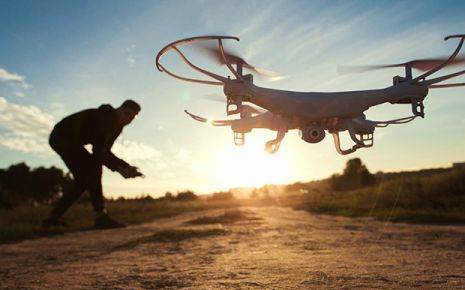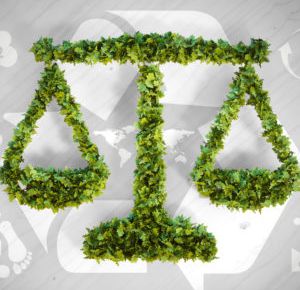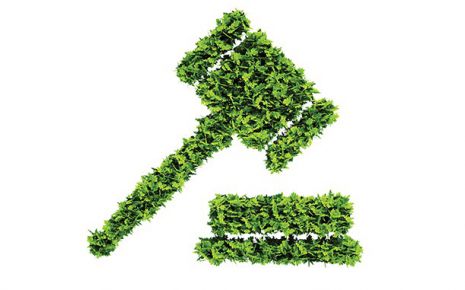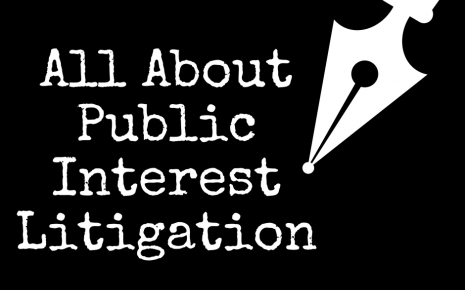Analysis of Copyright Issue in Cyberspace
As we enter into the emerging era of software technology and the ever-growing
sphere of the internet and world wide web, protection of data and the importance
of copyright protection has taken center-stage. The Invention of digital
technology was the most important revolution in the last century. The influence
of digital technology on information technology is phenomenal and indispensable.
This era has witnessed a new culture of the internet.
It is changing our lifestyle and way of doing business from traditional commerce to e-commerce. The government of India by passing IT (Information Technology) Act 2000 and later amending it on 27th October 2009 has given stimulus to cyber law. But various issues are not specifically covered by the Act, such as copyright, payment issues, media convergence, cyber squatting and jurisdiction. As the technology creates new opportunities, it also poses new challenges.
Copyright is the most complicated area of cyber law and facing its greatest challenge. Copyright law today protects works such as literary, dramatic and artistic works; cinematography films; sound recording and computer programs, databases and compilations.
As per Section 13 and 63 of Indian Copyright Act, 1957, literary works, pictures, sound recordings and other creative works are Kept safe from getting copied without copyright holder's consent.The question of how copyright law governs or will govern these material is as they are seen in Internet is still blur.
According to the Act, in the case of computer program protection is given on the basis of whether the same is given or hired, or offered for sale or hire, any copy of the computer program,no matter whether such copy has been sold or given on hire on prior occasions.[1]
The dynamic changes in field of Cyberspace are expanding with all of data utilized on web by entire world. Our laws have yet to catch up with it.The major need for appropriate copyright laws in India in the field of cyberspace is because of the limitation of the Information Technology Act, 20002, which fails to cover various issues such as copyright, domain name, cyberspace and jurisdiction.
Ease of replication- If one wishes to save this Article,he can get a perfect replicate of the original one.Moreover, he could make as many copies of it as he wants. The beauty of digital media is that there is no degradation in successive copying. For some, this is also its curse.
Software Piracy-Before understanding software piracy, it is basic to comprehend the three significant kinds of programming, that is:
Subsequently, theft of this product happens when the product so accessible on the web is accessible to be downloaded or incidentally put away by a web client without the authorization of the proprietor of the product. The Indian Copyright Act can't secure the unapproved dissemination and utilization of work over the web.
Encroachment over the web and robbery represents a danger to inventive works worldwide and in this manner the development of the web, the online business and the advanced economy. Copyright proprietors' selective right of dissemination applies to email appended or sent.
In Kelly v Arriba SoftCorp[2] Leslie Kelly's copyrighted pictures were displayed by a search engine that not only produced thumbnails but also displayed large size pictures in its search results. This was held by the court to be an unauthorized reproduction of plaintiff's images thatWhile making no one but thumbnails could be defended as reasonable use, however downloading from a web crawler the resultant full size picture added up to an encroachment.
In Microsoft Corporation v Yogesh Popat[3]The Delhi High Court dealt with a copyright infringement case and awarded compensation to the tune of Rs 23.62 lacs to Microsoft Corporation against M/s Compton Computers Private ltd and its chiefs for transferring pilfered programming of Microsoft in PCs that the organization sold in the wake of collecting parts.
Copyright Protection Of Computer Software/Program-Under the T.R.I.P.S Agreement, PC programs currently meet all requirements for copyright security similarly as some other abstract work, just as different types of I.P. insurance. Copyright matters most in the PC programming industry to off-the rack business applications part.
For the first time in India, the copyright law clearly made several provisions in this regard to protect the copyright owners: -The right of a copyright holder, Position on rentals of software,The rights of the user to make backup copies, Section 14 of Copyright Act makes it illegal the distribution of copies of copyrighted software without paper or specific authorization, The violator can be tried under both the Civil and Criminal Law,Heavy punishment and fines for infringement of software copyright,Section 63(B)-Stipulates a minimum full term of 7 days, which can be extended up to 3 years
There are two measurements to manage:
Analysis and Conclusion The detailed conversation in the previous parts needs to come full circle with the accompanying result:
So there is a need for specific provisions which regulate IP rights in Cyberspace.The Electronic Copyright Management System (ECMS) has helped to some extent in protecting these works on the internet. But still stronger legislation is needed to stop these infringements. Only stronger laws can ensure that people don't illegally reproduce or use other's work.More grounded disciplines and overwhelming punishments must be forced that nobody submits such acts in future.
References:
It is changing our lifestyle and way of doing business from traditional commerce to e-commerce. The government of India by passing IT (Information Technology) Act 2000 and later amending it on 27th October 2009 has given stimulus to cyber law. But various issues are not specifically covered by the Act, such as copyright, payment issues, media convergence, cyber squatting and jurisdiction. As the technology creates new opportunities, it also poses new challenges.
Copyright is the most complicated area of cyber law and facing its greatest challenge. Copyright law today protects works such as literary, dramatic and artistic works; cinematography films; sound recording and computer programs, databases and compilations.
As per Section 13 and 63 of Indian Copyright Act, 1957, literary works, pictures, sound recordings and other creative works are Kept safe from getting copied without copyright holder's consent.The question of how copyright law governs or will govern these material is as they are seen in Internet is still blur.
According to the Act, in the case of computer program protection is given on the basis of whether the same is given or hired, or offered for sale or hire, any copy of the computer program,no matter whether such copy has been sold or given on hire on prior occasions.[1]
Challenges/ Issues with respect to copyright in Cyberspace:
Copyright has an immediate connection to the circle of the internet. The internet is a virtual world, which in fact exists just in PC memory, yet it is intuitive and beating with life.1 In the internet, one can meet and converse with new individuals, read, distribute, research, hear music, see video, see craftsmanship, buy and sell things, get to government records, send email, download programming, and get specialized support.The dynamic changes in field of Cyberspace are expanding with all of data utilized on web by entire world. Our laws have yet to catch up with it.The major need for appropriate copyright laws in India in the field of cyberspace is because of the limitation of the Information Technology Act, 20002, which fails to cover various issues such as copyright, domain name, cyberspace and jurisdiction.
Ease of replication- If one wishes to save this Article,he can get a perfect replicate of the original one.Moreover, he could make as many copies of it as he wants. The beauty of digital media is that there is no degradation in successive copying. For some, this is also its curse.
Determination of Public and Private Use:
Most basic issue regarding copyright is drawing a line of distinction between private and public use. Likewise other laws relating to copyright in the world, the Indian Copyright Act also lays down distinction between public and private use. Public use reproduction is enforced with Right Holder's consent,whereas in case of private use law provides for fair dealing.Problem of Distribution and Reproduction Rights:
The right of reproduction presents certain fundamental problems over the internet. This is a direct result of the fundamental idea of web transmission. Proliferation happens at each phase of transmission. Brief duplicating (known as caching) is a basic piece of the transmission procedure through the web without which messages can't go through the systems and arrive at their goals. In the Indian Law, multiplication must be in a material structure yet incorporates storing of it in any medium by electronic means. Case laws need to make it amply clear about the temporary and permanent reproduction that takes place in the internet communications.Software Piracy-Before understanding software piracy, it is basic to comprehend the three significant kinds of programming, that is:
- Micro code: A program which controls the subtleties of execution;
- The working framework programming which control the wellsprings of a PC and oversees routine undertakings and is an important prerequisite for a PC to work;
- An application programming which is intended to play out a specific undertaking.
Subsequently, theft of this product happens when the product so accessible on the web is accessible to be downloaded or incidentally put away by a web client without the authorization of the proprietor of the product. The Indian Copyright Act can't secure the unapproved dissemination and utilization of work over the web.
Encroachment over the web and robbery represents a danger to inventive works worldwide and in this manner the development of the web, the online business and the advanced economy. Copyright proprietors' selective right of dissemination applies to email appended or sent.
In Kelly v Arriba SoftCorp[2] Leslie Kelly's copyrighted pictures were displayed by a search engine that not only produced thumbnails but also displayed large size pictures in its search results. This was held by the court to be an unauthorized reproduction of plaintiff's images thatWhile making no one but thumbnails could be defended as reasonable use, however downloading from a web crawler the resultant full size picture added up to an encroachment.
In Microsoft Corporation v Yogesh Popat[3]The Delhi High Court dealt with a copyright infringement case and awarded compensation to the tune of Rs 23.62 lacs to Microsoft Corporation against M/s Compton Computers Private ltd and its chiefs for transferring pilfered programming of Microsoft in PCs that the organization sold in the wake of collecting parts.
Legal Arena for Copyright Infringement
Copyright Infringement:
Copyright in a work is encroached when the work is replicated without the assent of the copyright proprietor. A copyright law manages the structure where the work is communicated. It doesn't hoard the possibility of data. As a medium, it permits an individual to get to a lot of data and to duplicate that data in a similar state as it is shown.Electronic Copyright Management System (E.C.M.S):
The copyright proprietors have a choice to utilize the innovation insurance measures. E.C.M.S is without a doubt a lawful structure to ensure against outsiders dodging these systems.Technology security measures might be delegated follows:
get to control measures and duplicate control measures. Instances of access control measures incorporate passwords, encryption and set top boxes. E.C.M.S is utilized to empower the copyright proprietors to follow, oversee or forestall replicating of their work, for example, advanced watermarking framework. This framework permits the copyright proprietor to follow and distinguish unapproved duplicates made by the first work.Copyright Protection Of Computer Software/Program-Under the T.R.I.P.S Agreement, PC programs currently meet all requirements for copyright security similarly as some other abstract work, just as different types of I.P. insurance. Copyright matters most in the PC programming industry to off-the rack business applications part.
For the first time in India, the copyright law clearly made several provisions in this regard to protect the copyright owners: -The right of a copyright holder, Position on rentals of software,The rights of the user to make backup copies, Section 14 of Copyright Act makes it illegal the distribution of copies of copyrighted software without paper or specific authorization, The violator can be tried under both the Civil and Criminal Law,Heavy punishment and fines for infringement of software copyright,Section 63(B)-Stipulates a minimum full term of 7 days, which can be extended up to 3 years
Indian Cyber Jurisdiction:
Though it is in the early stage starting at now, Jurisprudence improvement would get basic sooner rather than later; as the web and internet business will shrivel fringes and consolidation topographical and regional limitations on locale.There are two measurements to manage:
- Manner in which remote courts accept locale over the web and relative issues
- The outcomes of the announcement passed by a foreign court
Analysis and Conclusion The detailed conversation in the previous parts needs to come full circle with the accompanying result:
- T.R.I.P.S Agreement, wherein PC programs fit the bill for copyright
insurance, should be received and executed in letter and soul by all the
created nations
- Copyright, matters most in the IT Software industry to off the rack
business applications segment in creating nations which presents two
principle issues that must be firmly observed with the goal that the
copyright proprietors over the World will be secured.
- Stronger insurance and requirement could mean an increasingly restricted dispersion of advances. Eg: governments and benefactor associations should survey their product obtainment approaches.
- National copyright laws should be drafted suitably.
- Genuine and earnest endeavors are made for acquirement of software. Since software permit charges influence the absolute expense of an I.T framework
So there is a need for specific provisions which regulate IP rights in Cyberspace.The Electronic Copyright Management System (ECMS) has helped to some extent in protecting these works on the internet. But still stronger legislation is needed to stop these infringements. Only stronger laws can ensure that people don't illegally reproduce or use other's work.More grounded disciplines and overwhelming punishments must be forced that nobody submits such acts in future.
References:
- Section 14 (c), Copyright Act, 1957
- 280 F 3 d 934,9th Cir 2002
- 2005 (118)DLT 580, followed in Adobe Systems inc v K. Khanna 2009 (5) AS ( Delhi) 954
Law Article in India
Legal Question & Answers
Lawyers in India - Search By City
LawArticles
How To File For Mutual Divorce In Delhi

How To File For Mutual Divorce In Delhi Mutual Consent Divorce is the Simplest Way to Obtain a D...
Increased Age For Girls Marriage

It is hoped that the Prohibition of Child Marriage (Amendment) Bill, 2021, which intends to inc...
Facade of Social Media

One may very easily get absorbed in the lives of others as one scrolls through a Facebook news ...
Section 482 CrPc - Quashing Of FIR: Guid...

The Inherent power under Section 482 in The Code Of Criminal Procedure, 1973 (37th Chapter of t...
The Uniform Civil Code (UCC) in India: A...

The Uniform Civil Code (UCC) is a concept that proposes the unification of personal laws across...
Role Of Artificial Intelligence In Legal...

Artificial intelligence (AI) is revolutionizing various sectors of the economy, and the legal i...








Please Drop Your Comments